Women at the Helm: Paying It Forward
Published on October 18th, 2016
by Deborah Bennett Elfers
This summer, I spent some time with my friend, Barbara Farquhar, who has been on the front line of the steady (but slow) sea-change in the sport of sailing, one where women continue, even in 2016, to look for opportunities to be involved at the highest levels.
Yes, many things have changed over the years since Barbara began her involvement in the world of sailing – women can now be members of Yacht Clubs, high school and college girls are proving themselves on the race courses of their schools and clubs, many women are now competing in the Olympics, and more and more women are embracing the sport as amateurs than ever before.
Hearing Barbara talk about her experiences made me think about how far we’ve come, and how vitally important it is to help “pay it forward” when we are lucky enough to have some success, or when we find ourselves in a position to do some good for those who may be following in our footsteps.
There have been many important “firsts” and many gains made in women’s sailing over the years, and finally, today, we find ourselves at the critical juncture where we have the women of Team SCA, and The Magenta Project, building upon their success on the world’s stage.
Together, they are creating pathways to help support women sailors who are looking to participate in the most grueling racing at the top levels – they are paying it forward in a big way. And they are already making a difference. Their commitment to advancing women in the sport sends a huge message of empowerment to all of us.
But it wasn’t always this way. Let’s look back to 1995, when my friend Barbara had come to San Diego to be an umpire for the America’s Cup, where she was ultimately assigned to work with the all-women’s America³ team. After she had been there a week, and with less than a month to go before racing was to begin, J.J. (Fetter) Isler, the boat’s tactician, asked Bill Koch to hire Barbara as their Rules Advisor.
Of course, she took the position, and immediately began coaching the team’s afterguard, teaching them how to think like an umpire, with potential protests in mind. For Barbara, being the team’s Rules Advisor meant, quite suddenly, complete and total immersion with the team in San Diego, sifting through daunting piles of race documents, being on call 24/7 to Bill Koch himself, and spending her waking hours with the afterguard to get them ready to compete in very competitive and very public world-class racing. They were under intense media scrutiny every single day.
Their team worked tirelessly, even amid very challenging conditions. Bill Koch wrote this in an introduction for team member Anna Seaton’s (now Huntington) subsequent book, Making Waves: “They were mentally tough enough to ignore during the restart maneuvers of each race the intimidation tactics of Paul Cayard and his crew, who were flipping them the bird and yelling obscenities.” (Interestingly, Barbara would go on to work with Paul Cayard, and Il Moro, in 2000, as umpire.)
But there were other, more harmful detriments to America³’s success, the most damaging of which was a lack of senior women involved in the management of the campaign. Barbara felt that by the time she had come on as the team’s Rules Advisor, it was too late to make any changes, saying “The timing of my arrival made it awkward for me to assert myself. I sensed that I posed a threat to the other coaches.”
In her book, Anna Seaton Huntington wrote this: “I couldn’t help but wonder later what sort of influence Barbara, or a few other women of her stature, would have had on the team if she had been with us from the beginning, either as a sailor or a coach. ” Was this a long-ago wish for what the women of the Magenta Project have begun to do for the up-and-coming women sailors of today?
Sadly, as many of you may remember, at the 11th hour, the decision was made to replace J.J. with Dave Dellenbaugh as tactician, an emotional blow for those who had worked so hard in grooming this all-women’s team.
Many years later, in an article he wrote for ESPN in 2014, Gary Jobson wrote this: “Koch should have stayed with an all-female crew. Tactician J.J. Isler led the A³ through most of the America’s Cup trial races. But at a pivotal late stage in qualifying, Koch replaced Isler with David Dellenbaugh. His idea was to win crucial races with Dellenbaugh, the tactician for his own 1992 victory. But by turning the A³ from an all-women’s team into a mostly-women’s team at such a crucial point, Koch’s decision was the equivalent of changing starting quarterbacks during the final two weeks of an NFL playoff push. The switch was devastating for morale and was a PR disaster. Isler went on to have a fine career in sailing, winning a silver medal at the 2000 Olympic Games in Sydney and becoming the first woman elected to the Sailing World Hall of Fame.”
This makes Barbara’s account of Bill Koch’s comments, made many years later, in a presentation to the New Bedford Whaling Museum, all the more poignant. He was asked what he would have changed in the historic America³ campaign. His biggest mistake, he said, was not to have put another woman on the boat as tactician, and surmised that Barbara Farquhar would have been the logical person.
Despite the heartbreak, Barbara refers to the experience as “life changing,” and recounts many joyous experiences from her time with the team, most importantly in sharing with them the great responsibility of knowing that their collective efforts were encouraging women sailors all over the world, sending the important message to so many: “You, too, can do this!”
There have been other women’s teams, across the years, in other high stakes racing, as well. The Volvo Ocean Race (begun in 1973 as the Whitbread Round the World Yacht Race), lists these all-women teams:
• 1989-90 Maiden, skippered by Tracy Edwards
• 1993-94 US Women’s Challenge/Nance Franck, which became Heineken, skippered by Dawn Riley
• 1997-98 EF Education, skippered by Christine Guilou
• 2001-02 Amer Sports Too, skippered by Lisa Charles (now McDonald)
After Amer Sports Too, we had to wait a full 13 years before Team SCA burst on the scene and captured the world’s attention in the 2014-15 Volvo Ocean Race, winning the hearts of sailors all over the planet. But after the racing was done, it was very difficult for the team members to find other opportunities, while they watched their male counterparts fielding multiple offers.
And so, out of their frustration, the Magenta Project was born, giving voice to the incredible mission that grew out of Team SCA’s successful campaign. As the first all-women’s team in 25 years to win a leg of the Volvo Ocean Race, they wanted to capitalize on their experience, success, and media visibility in order to fuel future pathways for women in the sport.
After reading a December 2015 article on their blog, I couldn’t help but think about how far women have come in the sport since the world watched Bill Koch put the America³ team on that starting line in 1995, and the very beginning of a movement was born. On their blog, Team SCA writes this of their realization of the far-reaching benefits their hard work could engender: “But perhaps the team’s most profound legacy is the enormous fanbase that grew during the race both online and at stopovers around the world. Team SCA’s ambition to be competitive amongst a male dominated fleet struck a chord with both women and men. They were able to show that by empowering women to perform at the highest level, and that with dedication and by managing the physical and mental challenges throughout the race, they were able to give inspiration to people in many ways.”
One can’t help but notice how that sentiment echoes what the women who participated in the America3 campaign must have been feeling, under the intense magnification of the media’s coverage all those years ago.
But here’s the important thing to remember: the Magenta Project channels not only the energy surrounding Team SCA’s success, but also the hard work that every one of the pioneering women in those earlier campaigns accomplished. Team SCA and the Magenta Project have come together to find creative ways to pay all of that forward – to help other women find routes to participate in the world of professional sailing.
As I write this, Team Thalassa Magenta, an affiliated sailing team of the Magenta Project, have just participated in the Extreme Sailing Circuit in Lisbon. Their skipper, Sharon Ferris-Coat, had this to say of their experience: “The Extreme Sailing Series is such a great event to be part of. It’s just such an inspiration to get out there and show that us girls can do it. These boats are so physical, we definitely need six girls on the crew compared to the five men the other teams have, and we simply need more time on the water. But we have to be realistic, we only had three days training in the boat and we did really well. We should all be proud.”
The Extreme Sailing Series notes that “Ferris-Choat assembled a star-studded line-up of female sailors for her team’s maiden outing including ocean racers Dee Caffari (GBR), Elodie Mettraux (SUI) and Abby Ehler (GBR); Olympians Sally Barkow (USA), Annie Lush (GBR) Annemieke Bes (NED) and Gemma Jones (NZL); Nacra 17 World Silver medallist Hannah Diamond (GBR) and 420 World and European champion Annabel Vose (GBR). Each day the team was rotated to give each sailor both time on the water and behind the scenes on shore, all the time growing the exposure as they hunt for a sponsor for 2017.” Ferris-Choat remarked that “It was also a great opportunity to get the awareness out there that we are looking for commercial partners for next year. We have really achieved our goals and also shown that we can be competitive – we got a 2nd, a 3rd and a 4th over the regatta and we can’t complain about that.”
And then, there’s the big news from just a couple of days ago: the Volvo Ocean Race has announced that there will be new participation rules in place to ensure that the race attracts the world’s best female sailors. To date, 125 women have participated in the race since its beginnings in 1973, and this new ruling will hopefully make it easier for many others to follow. On their website, I was interested to read this quote from Knut Frostad, (VOR’s CEO from 2008-2015), in response to Team SCA’s 2015 participation: “The lack of women in the last few editions of the race has meant we haven’t been representing half the population of the human race.”
And thus, it should be duly noted that there have been many men, too, in addition to people like Bill Koch or Knut Frostad, too many to name here, who have been tirelessly advocating for increasing women’s participation in the sport. It seems to me that Team SCA has finally helped us reach the tipping point in women’s sailing, with an ever-increasing commitment from many sectors to help pave the way for women to achieve that often elusive entré into professional sailing.
But let’s not forget about young sailors, and amateur sailors, and those just contemplating getting started. I’ve watched the pride and enthusiasm among my own fleet mates for what Team SCA and the Magenta Project have been able to articulate, so it’s clear that their powerful message is trickling down into amateur, college, high school, and junior sailing, as well. The big, important message to women sailors of every level is that we can (and should) strive to be the best sailors we can be. The Magenta Project has added their voice to the message “You, too, can do this!” And why not? After all, we have some pretty good role models out there right now, wouldn’t you agree?
Additional Information:
If you’d like to discover more about America3, Tina Cerbone has created a short film about the campaign, entitled “Uncharted Waters.” You can also view an interesting video clip of her describing the making of the film, why she made it, and the difficulty she had in compiling the information to produce it. With many thanks to her efforts, this important story has been preserved and retold. Another interesting account, from an “on-the-boat” perspective, is America3 team member Anna Seaton’s 1997 book Making Waves, which I highly recommend. And finally, it is worth noting that the National Sailing Hall of Fame is actively compiling stories of women sailors in their American Women in Sailing Story Project, which also includes a brief piece on the America³ team. You can contact them directly through their website if you have stories of your own you’d like to share and preserve.


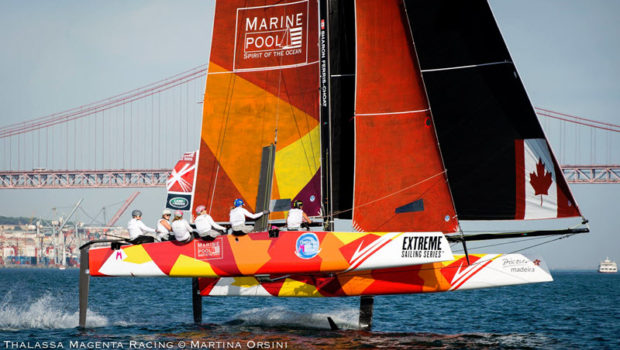


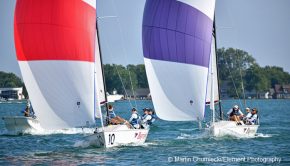
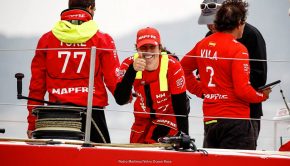
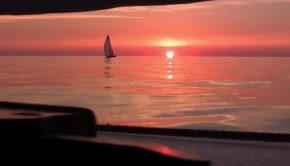
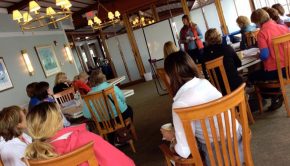
 We’ll keep your information safe.
We’ll keep your information safe.